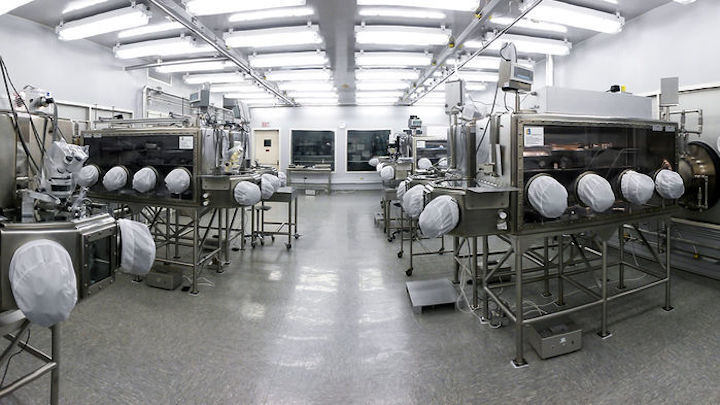24.03.2018

A clean curation lab at Johnson Space Center in Houston, Texas, holding Apollo rocks collected from the moon.
K. JOY/NASA
-
Clean rooms are the final line of defense in extraterrestrial exploration: Spacecraft departing for other worlds are stripped of any biological contaminants there, and samples returning from space, such as the Apollo moon rocks, are stored in pristine conditions to be studied later. But a new study suggests that a clean room storing meteorite samples at NASA’s Johnson Space Center (JSC) in Houston, Texas, may not be quite so clean, after all. It’s contaminated with an abundance of terrestrial fungus. The microbes—most from the common genus Penicillium—could confound the search for life in off-world specimens, just as the lab is preparing to receive samples from Mars and the carbon-rich asteroid Bennu.
“I’d characterize it as eye-opening,” says spectroscopist Marc Fries, who curates the cosmic dust collection at JSC but was not involved in the new work. “It drives home this point that fungi are an important part of microbial contamination.”
The results aren’t entirely shocking—the room in question was designed to be what’s known as ISO class 6, an international standard running from class 1 to class 9, in which class 1 is the cleanest—but they still mean that researchers need to be on their toes when curating future samples, says geomicrobiologist Aaron Regberg of JSC, who presented the findings this week at the 2018 Lunar and Planetary Science Conference in The Woodlands, Texas.
As part of a series of in-depth evaluations at JSC, Regberg and his colleagues swabbed the floor, table, and workbench of the lab where Antarctic meteorites are stored and processed for research. The meteorites, which blasted from the surface of other worlds before landing on Earth, are kept in cabinets pumped full of nitrogen at above-atmospheric pressures to help prevent material from entering the sealed environments. The researchers found between four and 28 viable cells per passport photo–size unit of area—similar to those in clean rooms at the NASA Jet Propulsion Laboratory in Pasadena, California, and the Kennedy Space Center in Florida where spacecraft are assembled. Much higher contaminant counts were detected inside the air filter for the nitrogen gas—installed in 1979 and not opened for nearly 40 years—but Regberg says the bugs were growing on the filter’s outer parts and multiple additional lines of defense separated this fungi from the actual samples.
Although most microbes in the other facilities were bacteria, between 83% and 97% of the microbes at the meteorite lab were fungus. That’s alarming because fungi can easily penetrate samples and grow branching filaments that chemically alter rocks. Some fungi also produce the amino acids α-aminoisobutyric acid and isovaline, which are rare on Earth but often found in carbon-containing asteroids. Were such earthly impurities to find their way into extraterrestrial samples, they could skew results, Regberg says.
In fact, the findings have already caused astrobiologist Daniel Glavin of NASA’s Goddard Space Flight Center in Greenbelt, Maryland, to rethink his own research on lunar soils stored at NASA’s Astromaterials Acquisition and Curation office, which had detected some α-aminoisobutryic acid. He originally suspected that the amino acid came from meteorites crashing into the moon, but now he wonders whether it might have a more terrestrial origin story.
Exactly why the researchers found more fungi than in previous tests is unclear. It’s possible that the low-nutrient environment at the curation office somehow favored fungal growth, but Regberg suspects that it’s because prior analyses failed to include the right mix of food and incubations times and temperatures in the growth media they used to cultivate the samples. “I wonder if we’ve not found fungi in other locations because we weren’t looking for them,” he says.
Quelle: CHROMA
